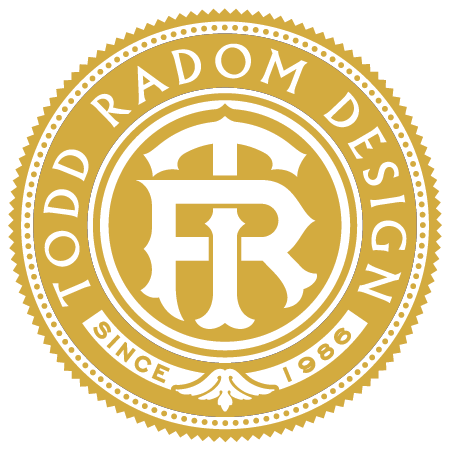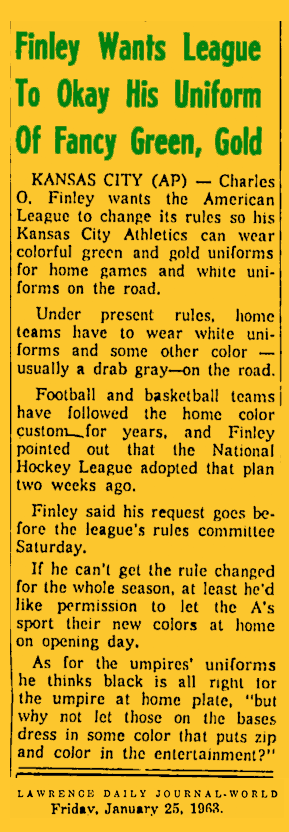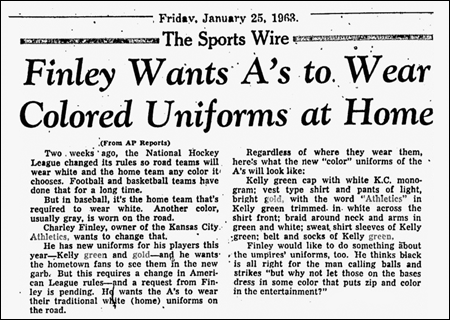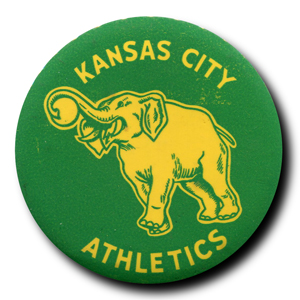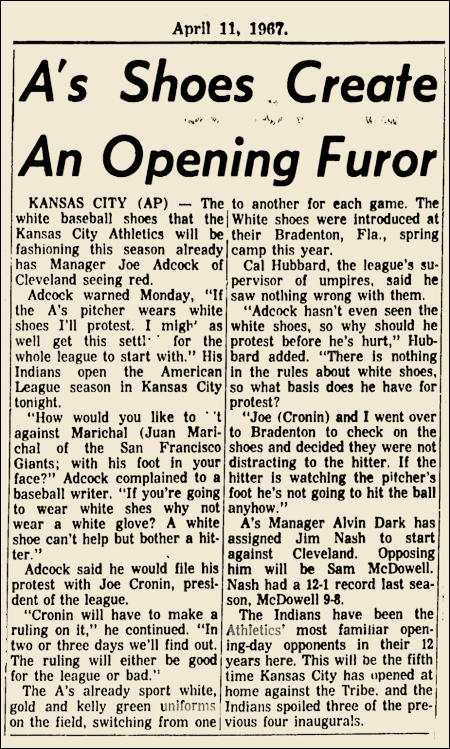Sports Logo Case Study #10—The Green & Gold A's
The tenth in an ongoing series of entries about vintage sports identities. Sports fans, as I have often said, are the most ardent brand loyalists on the face of the earth. There are stories to be told here at the intersection of art, commerce, history, and fandom.
The visual world of Major League Baseball in 1962 was a fairly drab affair. Home uniforms were uniformly white, all road uniforms were gray, and the core color for every one of the 20 MLB clubs was either black, blue, or red.
Enter Kansas City Athletics' owner Charles O. Finley. Variously described as caustic, flamboyant, overbearing, and petty, he was also a self-made millionaire, a marketing genius, and a man with plenty of innovative ideas.
In January 1963, Finley unveiled a plan that rocked the colorless world of professional sports and propelled it into the jet age, at least as far as aesthetics are concerned.
He announced that he was seeking permission to dress his team in vivid green and gold uniforms. Not only that, but in a complete reversal of tradition his original plan was to have the A's wear white on the road.
The proposal was instantly met with ridicule and astonishment. A January 26, 1963 column in the Milwaukee Sentinel by Lloyd Larsen said of the color scheme "Offhand that sounds a bit amateurish if not downright clownish… The point is that garish color can't help the club either way – at the gate or on the field. So why mess around?"
Finley supposedly chose green and gold in honor of his favorite college football team, Notre Dame. Other accounts indicate that the combination was his wife's favorite colors. In any case, Baseball's rules committee approved his request at a meeting in New York on January 26. When the A's took the field for their home opener on April 9, they became the first big league club to wear anything other than a white, gray, or light blue jersey since the Chicago White Sox sported dark blue uniforms in 1931.
A May 1963 Sports Illustrated article entitled "Everything's Green & Gold In Kansas City" quoted Finley as saying "This is the age of color. You've got to have color if you're selling." The story goes on to say:
Finley decided that the traditional baseball uniform of white or gray was too drab. Kansas City, he announced, would wear uniforms of bright gold with green sleeves, socks and caps. ("Kelly green and Finley gold," Jerry Lumpe calls it.) Finley selected the colors because he happens to be crazy about green and gold. The Kansas City players are less crazy about the colors, but there is little they can do except blush. On opening day, when the players filed cautiously down the runway into the dugout, Gino Cimoli told a reporter, "Say-one word and I'll deck you." Now, after one month, the players have almost stopped wincing when the opposing bench jockeys yell, "Hi there, beautiful."
The rest of the Major Leagues began their slow march toward a more colorful world the following season when the Chicago White Sox adopted powder blue road uniforms. Starting in 1970, the switch from flannel to double-knit material helped usher in a vivid technicolor era in MLB. By 1973 every Major League club was wearing polyester—the Expos, Royals, and Yankees were the last holdouts. The 1971 Baltimore Orioles saw action in bright orange jerseys and pants, Atlanta started wearing blue road jerseys in 1972, and San Diego wore yellow/gold uniforms both at home and on the road the same season. The revolution reached its zenith in 1975 when Houston introduced their rainbow uniforms. 25 of the 30 MLB clubs have an alternate colored uniform as part of their ensemble in 2014.
In March 1964 Finley provided more insight into his thoughts on his and other teams' uniforms:
In 1965 the A's had their manager and coaching staff wear white caps, thus differentiating them from the players.
Finley and the Athletics further shocked the baseball world in 1967 when they introduced white shoes, a franchise hallmark that was eventually included in their club logo (in 1971.) The A's still wear white shoes, the only MLB team that does so.
